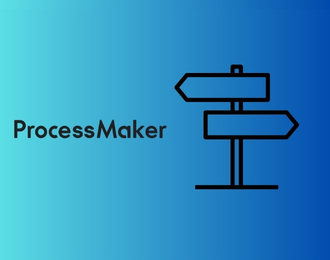What is the Loan Underwriting Process?
Loan underwriting is the process lenders use to evaluate the risk of offering a loan. In simple terms, it helps determine whether a borrower qualifies for a loan, how much they can borrow, and the terms of repayment.
For example, when applying for a personal loan, an underwriter reviews the borrower’s credit score, income, debts, and other financial details to make a decision.
Without loan underwriting, lenders would face the risk of offering loans to individuals who cannot repay, potentially leading to defaults, financial losses, and instability in the lending industry. It’s essential for responsible lending practices.
How Automated Loan Underwriting Works
Automated underwriting leverages algorithms, machine learning models, and predefined business rules to assess loan applications. Instead of relying on manual evaluation by loan officers, the system processes applicant data in real time to generate credit decisions.
Here’s how it typically works:
-
Data Collection – Applicant information is collected through digital forms or integrations with third-party data providers (e.g., payroll platforms, credit bureaus, bank statements).
-
Creditworthiness Assessment – The system evaluates credit scores, income-to-debt ratio, employment status, and risk factors using pre-set underwriting rules or AI models.
-
Decision Logic Execution – Based on scoring models, the system automatically approves, rejects, or flags the application for manual review.
-
Compliance & Documentation – Regulatory checks (KYC, AML, etc.) are performed automatically, and documentation is generated or stored in audit-ready formats.
-
Loan Offer & Disbursement – If approved, the system can auto-generate the offer letter and schedule disbursement, accelerating the borrower experience.
Examples of Automation in Loan Underwriting
Here are real-world examples showing how different parts of the underwriting process are being automated in 2025:
-
Credit Scoring Using AI Models
Lenders are using AI-powered credit scoring systems that analyze both traditional (FICO) and alternative data (e.g., rental history, mobile payment behavior) to assess creditworthiness. -
Instant Document Verification
Optical Character Recognition (OCR) and machine learning tools are used to extract and verify data from uploaded documents like payslips or tax returns. -
e-KYC and AML Checks
Identity verification and anti-money laundering checks are performed instantly through integrations with regulatory databases and biometric verification tools. -
Automated Income Verification
Platforms integrate with payroll providers or bank APIs to fetch and verify income data without requiring manual document uploads from applicants. -
Decision Engine Customization
Lending institutions build their own rule-based engines that reflect their unique risk appetite, product requirements, and customer segments.
Benefits of Automated Loan Underwriting
Automation in loan underwriting offers substantial value across speed, efficiency, and risk management. Here are the key benefits:
-
Faster Decision-Making
Automated systems can evaluate and decide on loan applications in minutes—dramatically reducing turnaround times from days or weeks in traditional processes. -
Improved Accuracy and Consistency
Algorithms apply underwriting criteria uniformly across all applications, removing human subjectivity and reducing the chance of error or bias. -
Lower Operational Costs
By reducing manual workload and administrative overhead, lenders save on staffing and can process more applications with the same resources. -
Enhanced Compliance
Automated workflows can ensure that regulatory and internal policy checks are applied consistently, improving audit readiness and minimizing compliance risk. -
Scalable Operations
Lenders can handle large volumes of loan applications during peak periods (e.g., seasonal surges, government programs) without compromising accuracy or processing time. -
Improved Customer Experience
Quicker approvals and transparent decisioning enhance borrower satisfaction, helping lenders build loyalty and reduce drop-offs in the application journey.
How to Automate the Loan Underwriting Process?
Automating the loan underwriting process can drastically improve efficiency, reduce human error, and speed up loan approvals. Traditional underwriting involves manual review of financial documents, assessing risk, and making decisions based on multiple factors—tasks that can be time-consuming and prone to errors. With FlowForma Copilot, you can automate and streamline every step of the process. Whether you prefer starting with a form, a diagram, or even voice input, Copilot structures your loan underwriting process quickly, accurately, and with minimal effort.
Let’s dive into how easy it is to automate loan underwriting with FlowForma Copilot.
- With FlowForma Copilot, creating a structured loan underwriting process is effortless. Provide a text prompt, upload a form or flow diagram, or use voice input to get started!
- FlowForma Copilot automatically structures your loan underwriting process using steps, questions, and rules at lightning speed.
- Review your loan underwriting process, and once satisfied, click “Build” to bring it to life.
- Open each section to review the questions and rules suggested by Copilot. Click here to define the conditions dynamically to fit your requirements.
- Once done defining, click "OK"
- Define the actions that should take place when they are met. Click “Save” to apply your logic.
- After customizing your loan underwriting process with rules and automation, click “Save” to securely store all changes.
- Click “Test Form” to preview how your process functions in a real-world scenario.
- At the top, you'll see the entire loan underwriting process is seamlessly structured in minutes with FlowForma Copilot! Thanks to smart rules and automation, your loan underwriting process is now fully optimized and ready to deploy — effortlessly transforming the way you work!
Conclusion
In conclusion, the loan underwriting process is a critical step for lenders to assess the risk of offering a loan, ensuring that borrowers are financially capable of repaying. Automating this process with FlowForma Copilot simplifies the steps, reduces manual errors, and speeds up the decision-making process. By using Copilot, you can quickly structure, review, and deploy a customized loan underwriting workflow—answering the question of how to automate loan underwriting efficiently.
Next, take a look at your current loan underwriting processes and identify areas where automation could bring improvements in speed and accuracy. Ensure that your automation rules align with your lending policies and regulatory standards, and test the workflow thoroughly before implementation.
FlowForma Copilot is designed to streamline your workflows and improve efficiency. Ready to transform your loan underwriting process? Try FlowForma Copilot today and experience seamless automation at its best.
.png) By
By 




